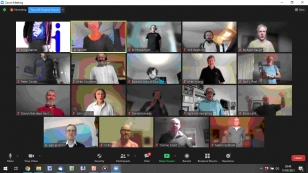While we’re thinking about balance, here is another example of dynamically-connected opposites we need to keep in equilibrium in the rehearsal process. To what extent should we be focused on remedial work, fixing problems, correcting technique, bringing people up to the standards we currently expect, and to what extent should we be stretching them into new areas of skill development and artistic ambition?
This is a perennial question for the choral director – it brings to mind Jim Clancy’s ‘type 1 and type 2’ rehearsing, but it is particularly salient now as people are gradually returning to live rehearsing after, in some cases, nearly 18 months of no rehearsing, or only being able to meet online. A lot of choirs find themselves out of practice in various ways; there’s a lot more remediation to be done than usual.
In these circumstances, the instinct is to focus on the basics. We need to get the voices connected back with the bodies and the breath, we need to retrain the ears to connect with the rest of the sound and the eyes to connect with conductor gesture. (And, indeed, the conductor needs to get their hands and ears connected back up to make that gesture effective again.)






